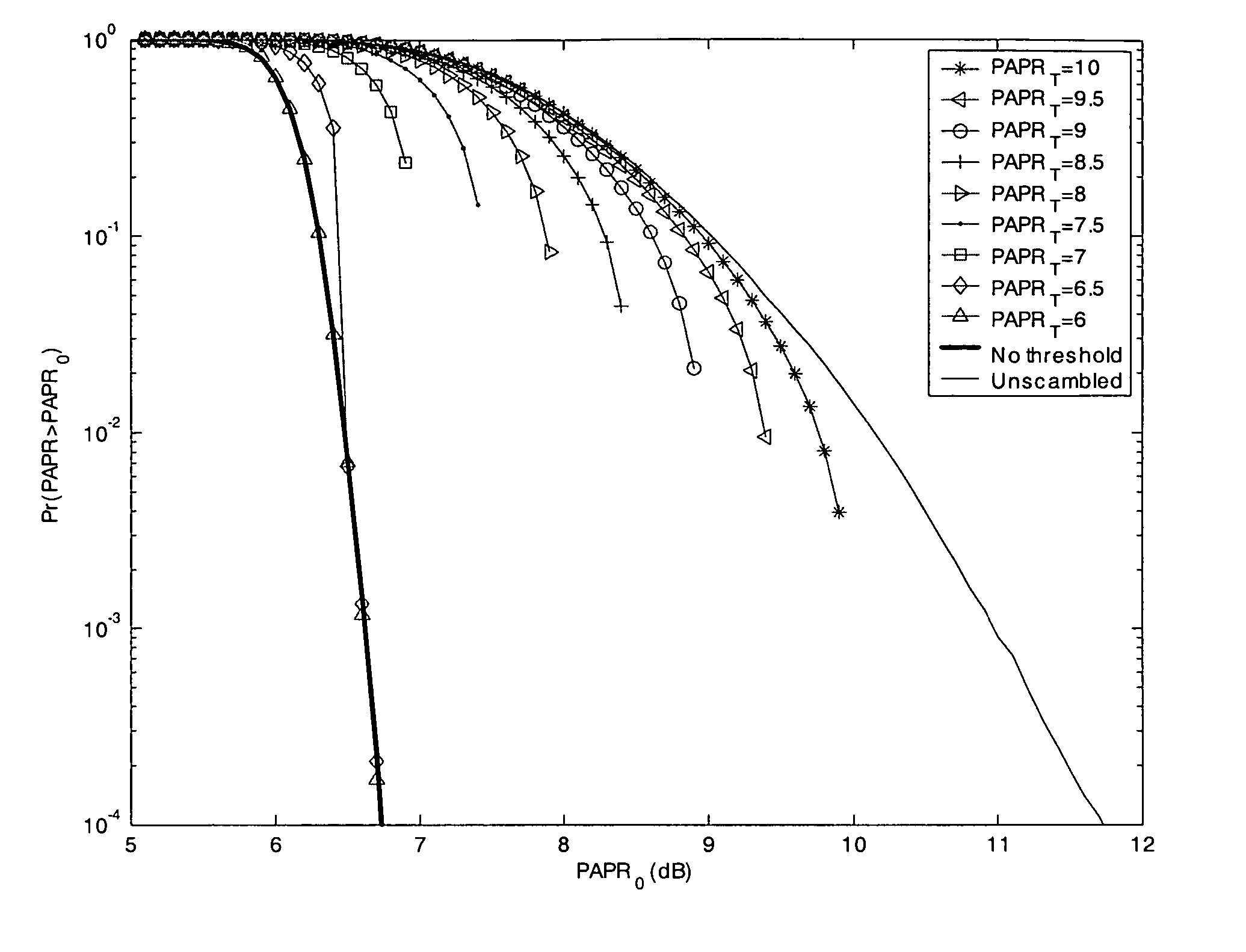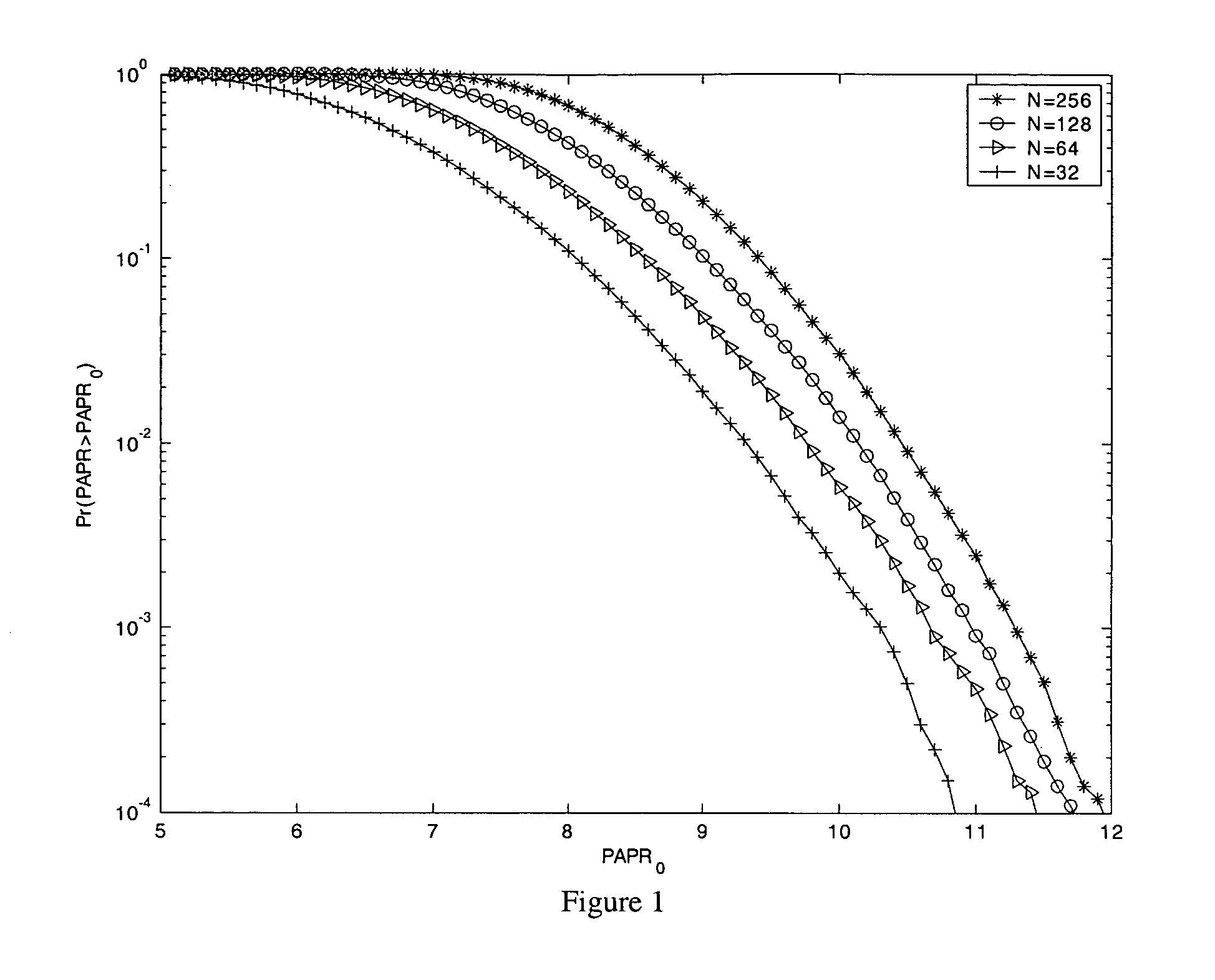OFDM peak-to-average power ratio reduction by combined symbol rotation and inversion with limited complexity
- Summary
- Abstract
- Description
- Claims
- Application Information
AI Technical Summary
Benefits of technology
Problems solved by technology
Method used
Image
Examples
Embodiment Construction
PAPR Analysis of OFDM Signals
[0017] In OFDM, each block of N symbols, {Xn, n=0, 1, . . . , N-1}, will modulate a subcarrier of an orthogonal set whose frequency is {fn, n=0, 1, . . . , N-1}, with fn=nΔf, where Δf=1 / NT and T is the original symbol period. The resulting baseband OFDM signal x(t) of a block can be expressed as x(t)=∑n=0N-1 Xnⅇj(2π fnt+βn),0≤t≤NT(1)
where βn is the initial phase of the nth subcarrier, which for simplicity is assumed to be zero.
[0018] The PAPR of the transmitted signal in equation (1) is defined by, PAPR=PPEAKPAVGwith(2)PPEAK=max{x(t)2}t∈[0,NT]and(3)PAVG=E[x(t)2]=1NT∫0NTx(t)2 ⅆt(4)
With N subcarriers each having normalized symbol energy, the average power PAVG=N.
[0019] Since most systems employ discrete-time signals, instead of reducing the continuous-time peak, i.e., max|x(t)|, the maximum amplitude of LN samples (where L is the oversampling factor) of x(t) is reduced. The case L=1 is known as critical sampling or Nyquist rat...
PUM
 Login to View More
Login to View More Abstract
Description
Claims
Application Information
 Login to View More
Login to View More - R&D
- Intellectual Property
- Life Sciences
- Materials
- Tech Scout
- Unparalleled Data Quality
- Higher Quality Content
- 60% Fewer Hallucinations
Browse by: Latest US Patents, China's latest patents, Technical Efficacy Thesaurus, Application Domain, Technology Topic, Popular Technical Reports.
© 2025 PatSnap. All rights reserved.Legal|Privacy policy|Modern Slavery Act Transparency Statement|Sitemap|About US| Contact US: help@patsnap.com



